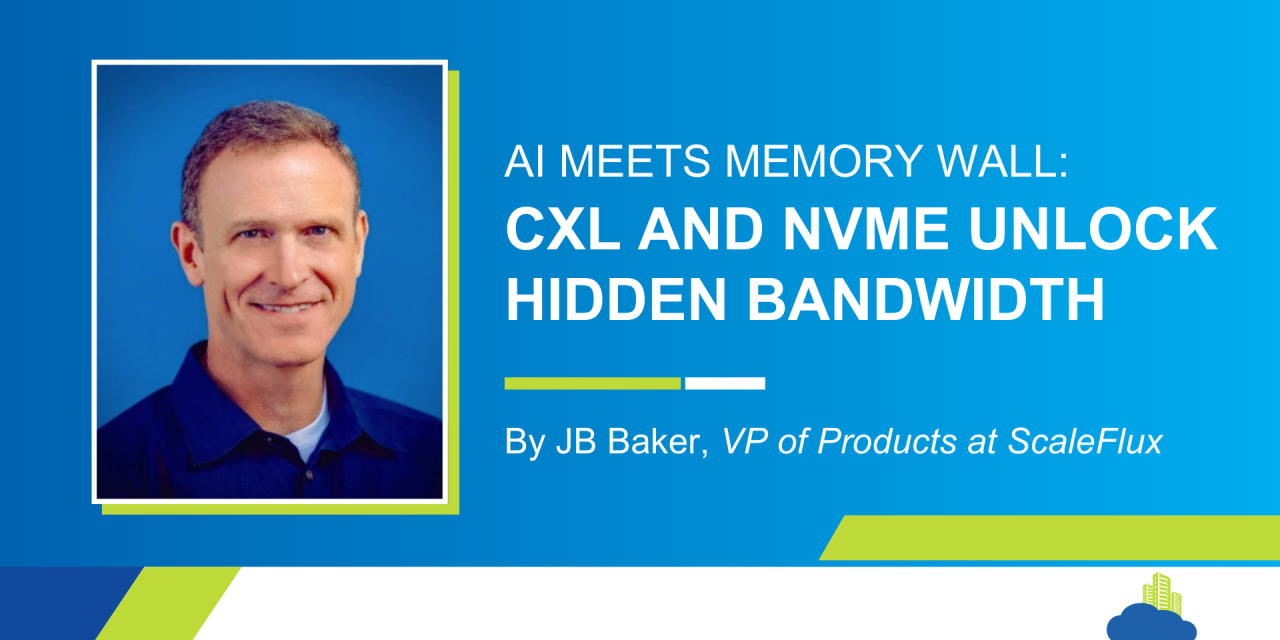Artificial intelligence (AI) is transforming industries and driving global innovation, but increasingly complex models are straining current infrastructure. Memory and storage bottlenecks, underused GPUs, and rising energy costs are slowing down AI initiatives and limiting scalability.
A staggering 70% of AI training time is spent on I/O instead of computation, with up to 40% of GPU time wasted waiting for memory or storage access. Traditional architectures can’t keep up with growing AI demands. AI already consumes 20% of global data center electricity and could reach 50% by 2025, highlighting the need for urgent infrastructure efficiency upgrades.
The future of AI relies on data pipeline innovations, not just faster processors. Solutions like Compute Express Link (CXL) memory expansion and advanced NVMe SSDs can unlock better performance and scalability while reducing inefficiencies.
Breaking Bottlenecks and Memory Constraints
AI workloads are unlike traditional enterprise applications, demanding fast, continuous access to massive datasets. However, traditional memory and storage architectures struggle to meet this need. The memory wall has arisen as a significant challenge, with improvements in memory performance unable to keep pace with advances in processing power. This results in pricey GPUs sitting idle, waiting for data. Scaling memory typically involves adding more CPU sockets or servers—a costly and energy-intensive approach. With AI workloads driving data volumes higher than ever, legacy architectures are hitting their limits.
Storage presents another bottleneck. AI applications require high-frequency, low-latency data transfers during training and inference. Traditional HDD storage and network-attached systems often fail to keep up, with latency spikes during checkpoints or synchronized writes wasting valuable GPU cycles and increasing costs.
CXL and NVMe: The Smarter Infrastructure Solution
The next-generation infrastructure for AI lies in disaggregated architectures enabled by CXL memory expansion and NVMe SSDs. These innovations address the dual bottlenecks of memory and storage, enhancing performance and scalability while lowering costs.
1. Compute Express Link (CXL): Memory Without Limits
- CXL decouples memory from CPU sockets, allowing systems to pool and scale memory independently from the CPUs.
- This reduces overprovisioning, leveraging memory more efficiently, and extending memory capacity beyond traditional DRAM limitations.
- Pioneering research highlights up to 39% increased memory bandwidth and 24% performance improvement in AI training benchmarks when integrating CXL memory.
- By enhancing scalability, CXL allows enterprises to run larger AI models and process complex datasets without costly and power-hungry hardware additions
2. Advanced NVMe SSDs Reshaping Storage
- NVMe SSDs, equipped with hardware-level compression and write reduction, optimize data transfer.
- These drives reduce latency by 20–30% and minimize redundant write cycles, accelerating writes, extending drive life, and improving power efficiency.
- By placing data closer to processors on PCIe interfaces, NVMe SSDs eliminate delays and congestion, ensuring faster checkpointing and training cycles.
- Combined with CXL, they create a seamless memory-storage pipeline, reducing the need for excessive data movement across networks.
Together, CXL memory and advanced NVMe SSDs redefine how data flows through AI infrastructure, unlocking the potential of GPUs and reducing inefficiencies across the data pipeline.
The Cost and Energy Implications
AI’s unprecedented growth comes at a steep cost. Google revealed a 27% increase in data center power usage in 2024, largely driven by AI workloads. The tripling of U.S. data center power use by 2030 could necessitate more than $500 billion in investments to upgrade infrastructure.
CXL and NVMe address this energy disparity holistically. By enabling scalable memory and efficient storage, they reduce the number of servers and GPUs required to achieve a given output. This results in both lower operational costs and more sustainable energy consumption. A 20–25% reduction in total cost of ownership (TCO) is achievable by improving memory and data movement efficiency.
Future-Ready AI Infrastructure
Scaling AI requires rethinking data center architecture. IT leaders and businesses should focus on:
- Memory Optimization with CXL: Remove bottlenecks with cross-server pooling and scaling.
- Smarter NVMe Storage: Use hardware-accelerated SSDs to cut latency and power use.
- Energy-Efficient Design: Choose solutions that reduce cooling and operational inefficiencies as AI demands grow.
AI is becoming essential to business success, and efficient infrastructure is critical. Staying competitive isn’t just about more power—it’s about rethinking how data moves from memory to storage to compute. With CXL and NVMe innovations, organizations can overcome traditional limitations, enabling faster, leaner, and more sustainable AI systems. Adapt now to thrive in the evolving AI landscape.
# # #
About the Author
JB Baker, the Vice President of Products at ScaleFlux, is a successful technology business leader with a 20+ year track record of driving top and bottom-line growth through new products for enterprise and data center storage. After gaining extensive experience in enterprise data storage and Flash technologies with Intel, LSI, and Seagate, he joined ScaleFlux in 2018 to lead Product Planning & Marketing as the company innovates efficiencies for the data pipeline. He earned his BA from Harvard and his MBA from Cornell’s Johnson School.


